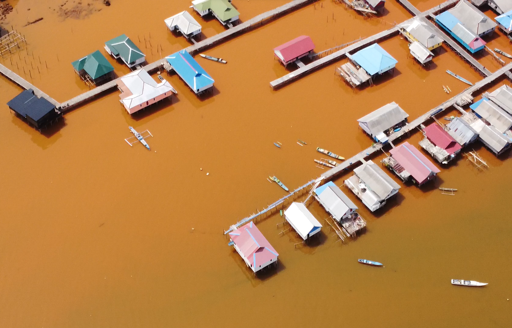For many members of the nomadic Bajau sea tribe on Indonesia’s Kabaena Island, growing up meant swimming and fishing in clear waters, just outside their homes built on stilts. However, in 2010, the water turned red, which the villagers blame on runoff from nearby nickel mining, Mongabay’s Hans Nicholas Jong reported in July. “Now, I never see children swim in the sea. They’re afraid of contamination,” Kasman Amir, a Bajau fisher, told Jong. Amir lives in Kabeana, off the southeastern tip of the Indonesian island of Sulawesi. A recent report by several local environmental NGOs focused on the southern part of the island following a 2024 report on the northern portion. Their report found that three nickel mining companies — PT Arga Morini Indah (AMI), PT Arga Morini Indotama (AMINDO) and PT Anugrah Harisma Barakah (AHB) — had caused major environmental damage. AMI and AMINDO’s concessions showed deforestation of 506 and 194 hectares (1,250 and 480 acres) respectively. Many hilly areas were cleared of trees, raising concerns about erosion and landslides, the report noted. The mining activity itself has caused severe coastal sedimentation and pollution, the report found. Of surveyed residents, 40% complained of skin diseases and respiratory problems that they attributed to the nickel mining dust and water pollution. Some residents reported experiencing itchiness while harvesting seaweed. A photo shared with Mongabay showed a resident with irritated skin marked with scaly patches. “I have to go farther out to sea to find octopus because the waters nearby have turned red,” Yayan,…This article was originally published on Mongabay
From Conservation news via this RSS feed


